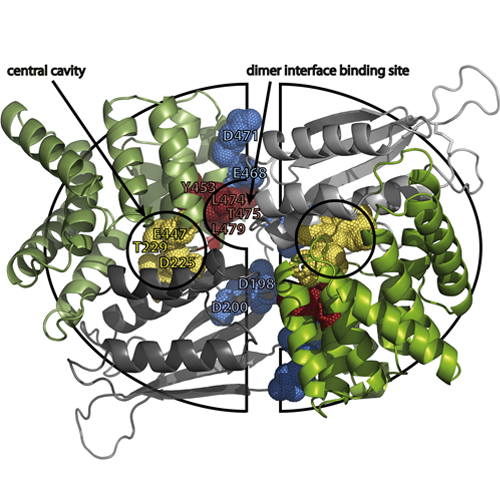Deactivation of the E. coli pH Stress Sensor CadC by Cadaverine
17-Sep-2012
Journal of Molecular Biology, 2012, http://dx.doi.org/10.1016/j.jmb.2012.08.023,, Volume 424, Issues 1–2, Pages 15–27 published on 17.09.2012
Journal of Molecular Biology, online article
Journal of Molecular Biology, online article
At acidic pH and in the presence of lysine, the pH sensor CadC activates transcription of the cadBA operon encoding the lysine/cadaverine antiporter CadB and the lysine decarboxylase CadA. In effect, these proteins contribute to acid stress adaptation in Escherichia coli. cadBA expression is feedback inhibited by cadaverine, and a cadaverine binding site is predicted within the central cavity of the periplasmic domain of CadC on the basis of its crystallographic analysis. Our present study demonstrates that this site only partially accounts for the cadaverine response in vivo. Instead, evidence for a second, pivotal binding site was collected, which overlaps with the pH-responsive patch of amino acids located at the dimer interface of the periplasmic domain. The temporal response of the E. coli Cad module upon acid shock was measured and modeled for two CadC variants with mutated cadaverine binding sites. These studies supported a cascade-like binding and deactivation model for the CadC dimer: binding of cadaverine within the pair of central cavities triggers a conformational transition that exposes two further binding sites at the dimer interface, and the occupation of those stabilizes the inactive conformation. Altogether, these data represent a striking example for the deactivation of a pH sensor.











